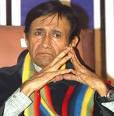
Of course one could wonder what use debates on climate change or gender based budgeting or neo colonialism might be on a university campus where arguments ought to be about clean toilets or the quality of the mess food. But by raising issues in a campus election that are well above the narrow university or hostel interests, these elections having teaching us about what elections really ought to be – not quite forgetting the local muhalla politics, but very clearly recognizing that there is a bigger world out there and the concerns of that bigger world matter in our little world even if we don’t quite see that bigger world and don’t quite understand all that there is to understand about what goes on in it.
That education is important for all of us. For so often our elections are dominated by the pettiest of issues and the larger sense of connectedness, of belonging to a shared world, competing for shared resources and sharing a shared fortune escape us; for they are never discussed; never debated, never conversed; except in the paneled world of academics. And if at all, at any point, the common man gets to know that there is indeed a world outside his or her immediate domestic concerns, it is at election time, when people turn up, if not exactly at their door step, at least in the their neighborhood, and make speeches in which potentially at least, issues of global or national import can touched on.
I have never been enamored of the numerous street corner meetings that the CPI (M) and its partners routinely organizes all over Kolkata. The sound system is loud and crackly, the chairs are rickety and the seating and the crowds spill over out into the streets. But one thing the leftists have done – they have ensured through their dull, dowdy and yet well prepared speeches that even the casual passer by pausing for a few minutes is exposed to a grounding of world affairs that he on his own might never have got.
Admittedly the world view presented is biased and there is a lot more to be said on practically any subject than what the comrades present; but a kind of political education is beginning to happen. The speech and the conversation in these discourses isn’t about the shortage of rice in the ration shop alone though this too would be taken up. It is of course up to the other parties now to counter the leftist world view with other ways of looking at the world and how well they take up the cudgels and make use of this opportunity and that is a different matter. But an election based on rational argument and debate, rather than the battle of a bunch of goons and hoodlums is JNU’s contribution to India’s culture of elections… And that relatively important contribution is worth preserving; if only because the commodity is so scarce.











